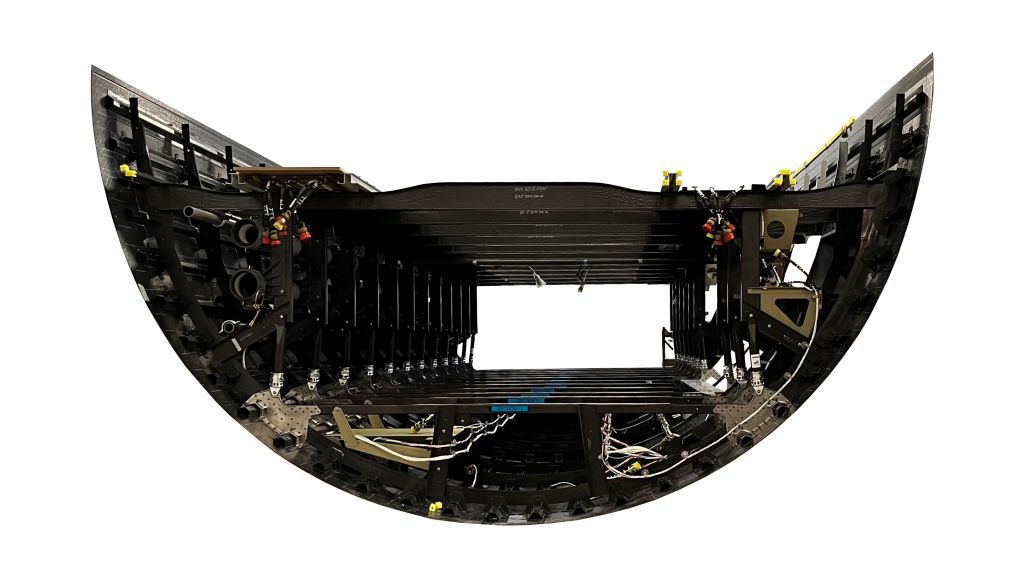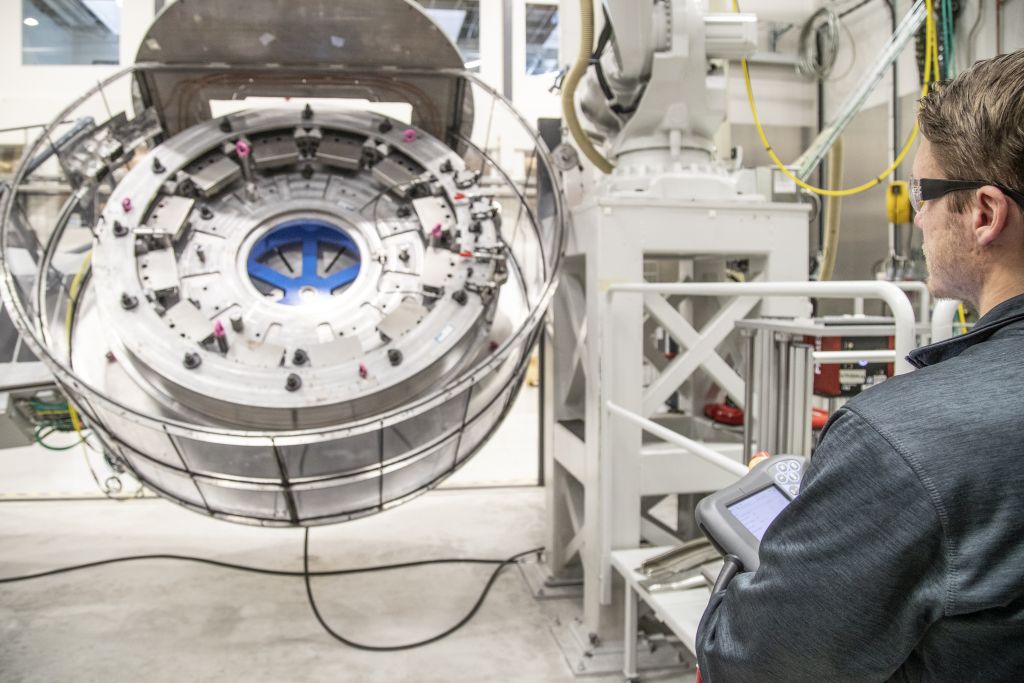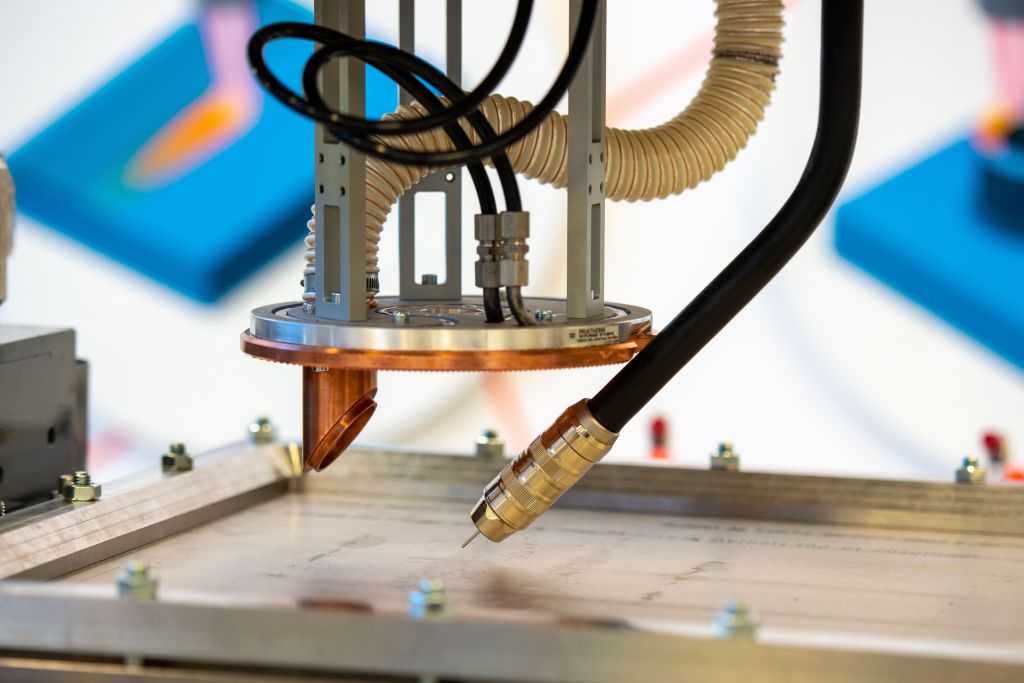Striving for new heights of sustainability

Environmental targets to tackle climate change and make flying greener mean the industry is facing some of the biggest engineering hurdles in its history. Ed Hill hears how GKN Aerospace is developing a range of technologies to meet the goals.
As a company deeply embedded in the aircraft manufacturing space, GKN Aerospace is keenly aware of the problems the industry faces, not only in terms of meeting current demand for aircraft, but the revolutionary technological developments that must be made to meet net zero emission targets set for the mid-century.
In fact, GKN considers itself as a ‘super’ Tier 1 manufacturer, a claim that seems more than justified considering it supplies all the major aircraft OEMs on both civil and military aircraft programmes. GKN claims that every day its aerostructures, engine systems and special products can be found on more than 100,000 flights. Now it says its mission is to be ‘The most trusted and sustainable partner in the sky’.
“This is how we want to make progress both in terms of the technology that we develop and how we run our operations,” says David Paja GKN Aerospace CEO. “90% of our products are relevant to decarbonisation in the industry and the investment that we are making will be even more relevant to aerospace in the future.”

At its Paris Airshow briefing held in London recently, the company outlined the technical, manufacturing, and operational advances it is making to make flying more sustainable across its global network.
In the coming months GKN will be completing the restructuring of its operations at its more than 30 facilities around the world to concentrate areas of manufacturing expertise with the aim of raising efficiency, as well as developing an 80,000m² joint venture workshop in China to build aerostructures for domestic manufacturers such as COMAC.
Centre to centre
A major part of this strategy is the further development of its four main global technology centres in Sweden, the UK, US, and Netherlands.
“The centres are world class in terms of the research they carry out,” comments Paja. “They operate at the heart of aerospace manufacturing both globally and locally with academia and the wider industry. They have access to government funding and each is focused on different technologies. In Sweden they are focusing on additive manufacturing, AI and Industry 4.0, at Bristol they are working on next generation wing technology and hydrogen/electric development. The Netherlands is focused on advanced thermoplastics and high-voltage electrification and in Dallas they are exploring additive manufacturing for defence applications, partnering with Northrop Grumman and academia such as Oak Ridge Labs. This is what underpins our position as a super tier one supplier and gives us the scope that we have across all these different technologies.”
Sustainability is driving all aspects of GKN’s operations, whether it’s lowering emissions at its sites, reducing consumption of natural resources or developing technology that will enable air travel to get to net zero.
The company recently signed up to the science-based targets initiative (SBTi) for the entire set of its emissions for assessment and validation over the coming months. These science-based targets will play a key role in accelerating its reduction in greenhouse gas emissions.
SBTi is a collaboration between the Carbon Disclosure Project (CDP), United Nations Global Compact (UNGC), the World Resources Institute (WRI), and the World Wildlife Fund (WWF) working to ensure a sustainable future for the planet.
Adding advances
In terms of sustainability GKN is also exploring more sustainable ways of manufacturing. One of its biggest technical developments in this area is additive manufacturing. After many years in development its wire-based laser metal deposition (LMD-w) process – where a laser melts or welds a wire feedstock layer by layer to form a part – is now paying dividends by demonstrating much greater efficiency when manufacturing aero engine parts.

A recent case is an additively made and certified fan case mount ring for a Pratt & Whitney GTF engine used on the Airbus A220. In this example rather than machining away nearly 90% of a 440kg titanium billet to make the ring, the additive LMD-w process builds it leading to a 72% reduction in the amount of material needed and reducing CO2 emission to manufacture it by 6.5 tonnes.
“With LMD-w we significantly reduce the material we use, the energy we use and the emissions we produce making it,” explains Russ Dunn, chief technology officer and head of strategy at GKN Aerospace. “It also gives us much greater supply chain flexibility. We do not have to procure castings first and we can make and deliver the part faster.”
Manufacturing this way also reduces scrap, reliance on other suppliers and shipping and delivery times, hugely reducing lead-times. It also enables design changes to be made more easily reducing the time to develop new iterations.
Dunn says now that GKN has proven the LMD-w process on parts such as the fan case mount ring, it has reached a “tipping point” with customers now keen to apply it to other parts.
“Over the next three or four years there is a whole series of products that we've agreed to manufacture additively. These are existing aircraft structures that we are transforming from old style manufacturing processes into an additive equivalent.”
GKN is also making big strides when it comes to composite parts in aircraft. It is focusing its technology for applications on the next generation of single aisle aircraft which, although by far the biggest type found in airline fleets, still only comprise around 10% composite materials compared to modern widebody aircraft where the figure is nearer 50%.
It is working on Airbus and the ATI’s Wing of Tomorrow (WoT) demonstrator programme, where it has delivered three ship sets of fixed trailing edge (FTE) components made using resin transfer moulding (RTM) and an out of autoclave curing process. This not only delivers significant weight savings but also removes one third of the production steps and reduces energy consumption.
It is also developing its thermoplastic composite technology. Its Netherlands technical centre has successfully manufactured one the world’s largest thermoplastic components as part of the Multi-Functional Fuselage Demonstrator (MFFD) project led by Airbus, in partnership with Royal NLR Netherlands Aerospace Centre, Delft University of Technology and SAM|XL.
The programme demonstrates how the use of thermoplastic composites can help realise a next generation fleet of aircraft capable of offering the same strength and durability as aluminium, as well as speeding up production and reducing the overall weight of aircraft. The 8m by 4m composite structure – delivered under the Clean Sky 2 STUNNING project – consists of more than 400 thermoplastic fibre-reinforced parts, as well as thousands of spot welds and hundreds of meters of continuous welds.
“With thermoplastics you can form and weld them together, so they are good for thin-walled structures like fuselages that then have components that are bonded on to them,” states Dunn. “We have really refined the process to get to a very high level of quality. We are confident that we are in a good position to be selected for any new product request (NPR) programmes using this technology.”
Going zero
However, GKN Aerospace is addressing the biggest challenge facing aviation – reducing aircraft CO2 emissions to net zero – by working on electric propulsion, hydrogen combustion and hydrogen-electric propulsion.
In the mid- to longer-term, the company is progressing its favoured solution for sustainable aviation, hydrogen-electric. The H2Gear concept uses fuel cells to convert liquid hydrogen into electricity that is used to power the engines and other systems. As part of a collaborative project with industry, academia and government, it has worked on prototypes of a 48 and 96 seat regional aircraft that would be used for short haul journeys.

The major challenge with this technology is the cooling required to keep hydrogen in a liquid form (requiring less space for storage) and also maximising the power or voltage of the electricity needed to power the aircraft by cooling the electrical system to reduce resistance and the risk of electrical circuits arcing, a particular problem when aircraft are flying at higher altitudes. GKN is developing a cryogenic system that will cool not only the hydrogen but the whole electrical system resulting in resistance only a fraction above zero. It is now at TRL4 with the concept and hopes to have a 1-megawatt ground-based demonstrator tested and operating by the end of 2025 in Bristol.
However, Dunn is keen to point out that in future no one engine technology can meet all the demands to substantially reduce CO2 and NOx flight. For longer journeys and larger aircraft, the company still believes some form of combustion engine will be required, although powered by a less environmentally damaging fuel such as hydrogen rather than kerosene.
“Hydrogen [hydrogen combustion and hydrogen/electric] as an energy source is where the industry needs to develop future engine technology,” he says. “In our opinion, over a certain size and journey you will need hydrogen combustion to fly an aircraft, so our research with the H2 Jet programme has been looking into what that architecture might look like.
“With Hydrogen-Electric we originally thought that around 50 seats would be the maximum point before combustion would be required for regional journeys, but now we believe the ceiling is much higher. We already have a viable 96 seat model and it could be more. The barrier is the point where cryogenic technology and the voltage needed to power the aircraft become so great that it's no longer a realistic solution.”
GKN Aerospace will be exhibiting at Chalet 383, Row B at the Paris Airshow 2023.












